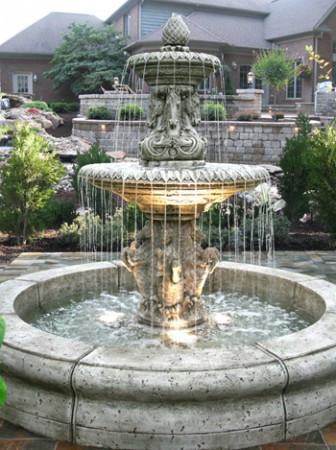Bottom Drainage for Large Outdoor Planters

We all know that plants need water to survive and thrive. Oxygen is also very essential to the plants, which is why many people like to use large outdoor planters for their gardens or around the house.
However, there can be a problem with this if you live in an area that tends to get somewhat wet during rainstorms or other times of the year where it rains consistently.
If your tall outdoor planters do not have drainage holes on the bottom, the soil will become sopped with moisture and unable to absorb any more water from rain or watering. This leads to plant death because they are drowning in too much water without being able to drink any more up into their plant roots!
In this article, we will guide you to prevent this from happening with the help of large outdoor planters.
What Is The Bottom Drainage For Large Outdoor Planters?
Drainage holes in large pots will allow excess water to escape, preventing the bottom of the garden from becoming soaked with water. This is beneficial to your plants because they can absorb more nutrients and oxygen in their potting soil when it remains dry.
The Benefits Of Bottom Drainage For Large Outdoor Planters
Many benefits come with adding a drainage hole to your containers. For example, if you do not add bottom drainage holes, then any excess rain or watering applied to your large pot will remain at its bottom, leading to root rot and ultimately killing off all of the roots in your container. However, installing bottom drainage holes before you plant anything ensures that your plants will remain in a moist, draining environment that is optimal for healthy plant roots.

Where To Buy Quality Bottom Drainage For Large Outdoor Planters?
There are many places where you can purchase bottom drainage holes. Some familiar places include your local garden center, gardening shops, and online retailers like eBay or Amazon.
When shopping online, make sure you look at what other people think about the quality of bottom drains before purchasing them. If you have access to a drill through your job or have someone who can borrow one from their workplace, check out our "DIY bottom drain" section below.
Using the DIY method is also another affordable method that allows you to get bottom drains without having to pay too much money!
Making A DIY Bottom Drainage for Large Outdoor Planters
If you do not have bottom drainage holes in your tall outdoor planters and you feel confident enough to drill them yourself, follow the steps below:
First, choose a location where you would like bottom drainage to be located - this can be either at the bottom of your garden or on the side.
Once you have chosen a location for bottom drainage holes, use a ruler or tape measure to determine how far away from each edge your bottom drain will need to be drilled. This will determine where you should place your bottom drain in order for it to be just right!
Next, take a pencil and mark this distance on all four sides. Using a screwdriver or other tool that can break through tough plastic, poke a hole into each's center point.
Finally, use a drill to make bottom drainage holes in your planter even outdoor wall planters.
Is It Okay To Drill All Bottom Drainage At Once?
While it is possible to drill bottom drains into your container garden as soon as you buy them, we do not recommend this for several reasons: Drilling bottom drains can be difficult and time-consuming.
You might choose where you will place the bottom drain out of reach once the soil and plants are already inside - causing damage to your garden and wasting money.
You can easily mess up bottom drains and cause problems for your plants. Rather than take these risks, we recommend that you follow the steps outlined above to ensure bottom drainage is done perfectly!

Installing A Bottom Drain System On Your Large Outdoor Planters
Bottom drainage is a very important part of any container garden. Without bottom drainage, plants will remain too wet and over time this can lead to root rot and the eventual death of your beautiful plants.
If bottom drainage is not in place in your containers, we recommend you install bottom drains immediately after buying or planting your containers in your backyard.
While bottom drain installation may seem like a daunting task, it's actually pretty simple when done correctly.
Here are some bottom drain tips that will help make bottom draining less difficult:
Do not drill bottom drains until you have placed them in their final location - preferably near the bottom of the planter including your outdoor wall planters with at least one side touching the ground so that the water has an easy escape route.
Once bottom drains are drilled, make sure that bottom drainage holes are large enough for excess water to pass through easily - bottom drains that are too small may become clogged by soil, mulch, or even insects.
Then finally, sit back and enjoy your beautiful bottom drained garden.

Final Thoughts
If you like gardening, this article may have provided you with really useful instructions for installing a bottom drain system. It is a simple and budget-friendly method of reducing the quantity of water that evaporates from the soil.
Plus, it's simply one less thing to think about while watering! You can also have the option to put in lightweight pot fillers such as crushed soda cans, pine cones, plastic milk jugs, clay balls, and other natural organic materials so that you can have high-quality potting soil for each of your large planters.
Now that you've gathered the important information, then you might consider installing a bottom drain system now so you can enjoy these benefits to your garden and outdoor planters including your outdoor wall planters for years to come.
